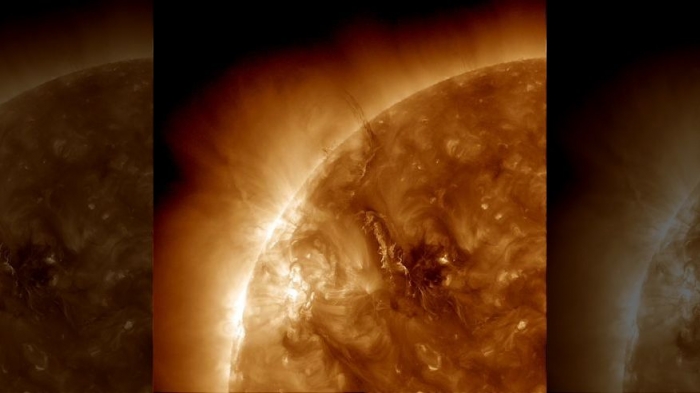Scientists from the Birmingham Solar-Oscillations Network at the University of Birmingham, in the United Kingdom, used the sun's sound waves to determine that one of its outermost layers may be growing thinner.
"The sun is the only star on which we can get this level of detail," Yvonne Elsworth, a researcher working on the project at the University of Birmingham, told Space.com in an email. "Other stars do show activity cycles, and if we can understand the processes in the sun, we will be able to extend the ideas to other stars."
"The study of the sun is crucial to scientists' understanding of the cosmos because it is the closest star to our planet, and learning about its life processes reveals more about the dynamics of stars many light-years away," she added.
Elsworth presented the new research at the National Astronomy Meeting at the University of Hull in the United Kingdom on July 4.
Tracking the waves
The sun, like Earth, has different layers. One of the outermost layers is a few hundred kilometers wide, according to NASA, and is made up of plasma. The sun's plasma is a tremendously hot mix of separated electrons and ions, which means they are charged and naturally create magnetic fields. Plasma churns and pulls in different directions around the sun, and the enormous heat produced by the nuclear fusion at the core plays along these currents to create magnetic fields.
So how does the sun produce sound? The movement of the plasma creates sound waves. Patches on the surface of the sun oscillate up and down in 5-minute motions, NASA officials said in a reference page. These sound waves travel radially, meaning inward and outward. The sound waves remain inside the sun, because the cavity of the star is constrained by the properties of its surface, thereby sending the waves downward. Then, a change of direction caused by the wave's increased speed toward the middle of the sun makes it bounce back up toward the surface. When scientists study the frequency of these waves, they can tell a lot about the inside of the star, as well as learn about its magnetic field. This is called helioseismology, and as the name suggests, it is similar to the concept of studying subterranean waves on Earth to predict earthquakes.
Solar sound waves are much too low for humans to hear, but they can be detected visually on the sun's surface and analyzed (as in this explanatory video ). Visible features are caused by sound waves deep inside the sun's core, and they are simultaneously shaped by the activity near the solar surface.
Because these features are influenced by both the sun's core and the area near its surface, studying the features gives scientists a big picture look at the sun, researchers said in a statement about the new work. This allows them to learn about the changing physical conditions of the sun, either at a given moment or over many years.
Evidence of thinning
In the new research, the scientists found that the sun's outer layers were more sensitive to medium and higher frequencies, indicating that some areas of the solar surface have weakened, the researchers said.
"The acoustic properties have as such failed to re-set to their pre-1994 state," the researchers wrote in a paper detailing their work, which was released in the journal Monthly Notices of the Royal Astronomical Society in May.
The study tracked changes in the sun by looking at previous solar cycles of change, such as Cycle 22 which lasted from the years 1986 to 1996, and found that the oscillation frequencies were confined to a thinner layer than those previous cycles. That means it has been more than 20 years since scientists have observed such a thin solar layer. Factoring in observations from earlier technologies, the data suggests the sun has not had an outer layer this thin since over 100 years ago.
Therefore, researchers of the BiSON study believe this weakening phenomenon is an overall thinning of the layer , rather than just a normal part of the sun's 11-year cycle of activity.
When a solar cycle ends, it is called a solar minimum. The sun is approaching the end of Cycle 24 now, and will reach it around 2019 . By comparing findings of the current period of minimum activity with those of previous cycles, scientists can paint a picture of the changes in the sun over a span of decades, and sometimes centuries.
More about: #Celestial-Sound
















































